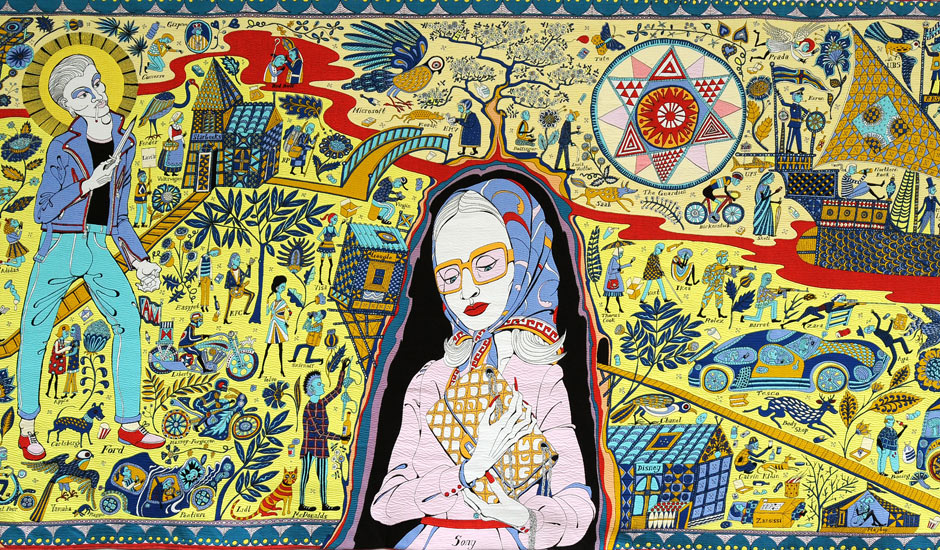Postmodernism
The term postmodernism is used to describe the changes that took place in Western society and culture from the 1960s onwards that arose from challenges made to established structures and belief system. In art, postmodernism was specifically a reaction against modernism which had dominated art theory and practise since the beginning of the 20th century.
The term postmodernism was first used in around 1970. As an art movement postmodern style or theory on which it is hinged. It embraces many different approaches to art making; and a host of art groups and movements from the 1960s onwards can be described as postmodernist. It is therefore perhaps easiest to define postmodernism by looking at its main characteristics. Anti-authoritarian by nature; it refuses to recognise the authority of any singe style of definition of what art should be. It collapses the distinction between high culture and mass or popular culture and it tends to get rid of the boundary between art and everyday life. Resultantly, postmodern art can be characterised by its self- conscious use of earlier styles and conventions, and an eclectic mixing of different artistic and popular styles and media.
Main Characteristic 1
Anti- authoritarian
Anti authoritarian- opposed to authoritarianism, democratic- characterized by or advocating or based upon the principles of democracy or social equality.
Main Characteristic 2
Collapses boundaries between high culture and the Mass Culture
Jeff Koons
Jeffrey "Jeff" Koons is an American artist known for his reproductions of banal objects—such as balloon animals produced in stainless steel with mirror-finish surfaces. He lives and works in both New York City and his hometown of York,Pennsylvania.
His works have sold for substantial sums of money, including at least one world record auction price for a work by a living artist.
Critics are sharply divided in their views of Koons. Some view his work as pioneering and of major art-historical importance. Others dismiss his work as kitsch, crass, and based on cynical self-merchandising. Koons has stated that there are no hidden meanings in his works,nor any critiques.
Jeff Koons rose to prominence in the mid-1980s as part of a generation of artists who explored the meaning of art in a media-saturated era.He gained recognition in the 1980s and subsequently set up a factory-like studio in a SoHo loft on the corner of Houston Street and Broadway in New York. It was staffed with over 30 assistants, each assigned to a different aspect of producing his work—in a similar mode as Andy Warhol's Factory.
"I think art takes you outside yourself, takes you past yourself. I believe that my journey has really been to remove my own anxiety. That's the key. The more anxiety you can remove, the more free you are to make that gesture, whatever the gesture is. The dialogue is first with the artist, but then it goes outward, and is shared with other people. And if the anxiety is removed everything is so close, everything is available, and it's just this little bit of confidence, or trust, that people have to delve into." Jeff Koons



Grayson Perry
Grayson Perry is an English artist, known mainly for his ceramic vases and cross-dressing. Perry's vases have classical forms and are decorated in bright colours, depicting subjects at odds with their attractive appearance. There is a strong autobiographical element in his work, in which images of Perry as "Claire", his female alter-ego, often appear. He was awarded the Turner Prize in 2003.
In his childhood Perry took an interest in drawing and building model aeroplanes, both of which were to become themes in his work.
 |
| The Walthamstow Tapestry |
 |
| The Adoration of the Cage Fighters |
| Gretel and a Russian Orthodox church, in the form of his house for Essex. The rentable holiday home is also an eccentric dedication to an individual by the name of Julie Cope. |
No comments:
Post a Comment